The Peony Garden is simultaneously three things.
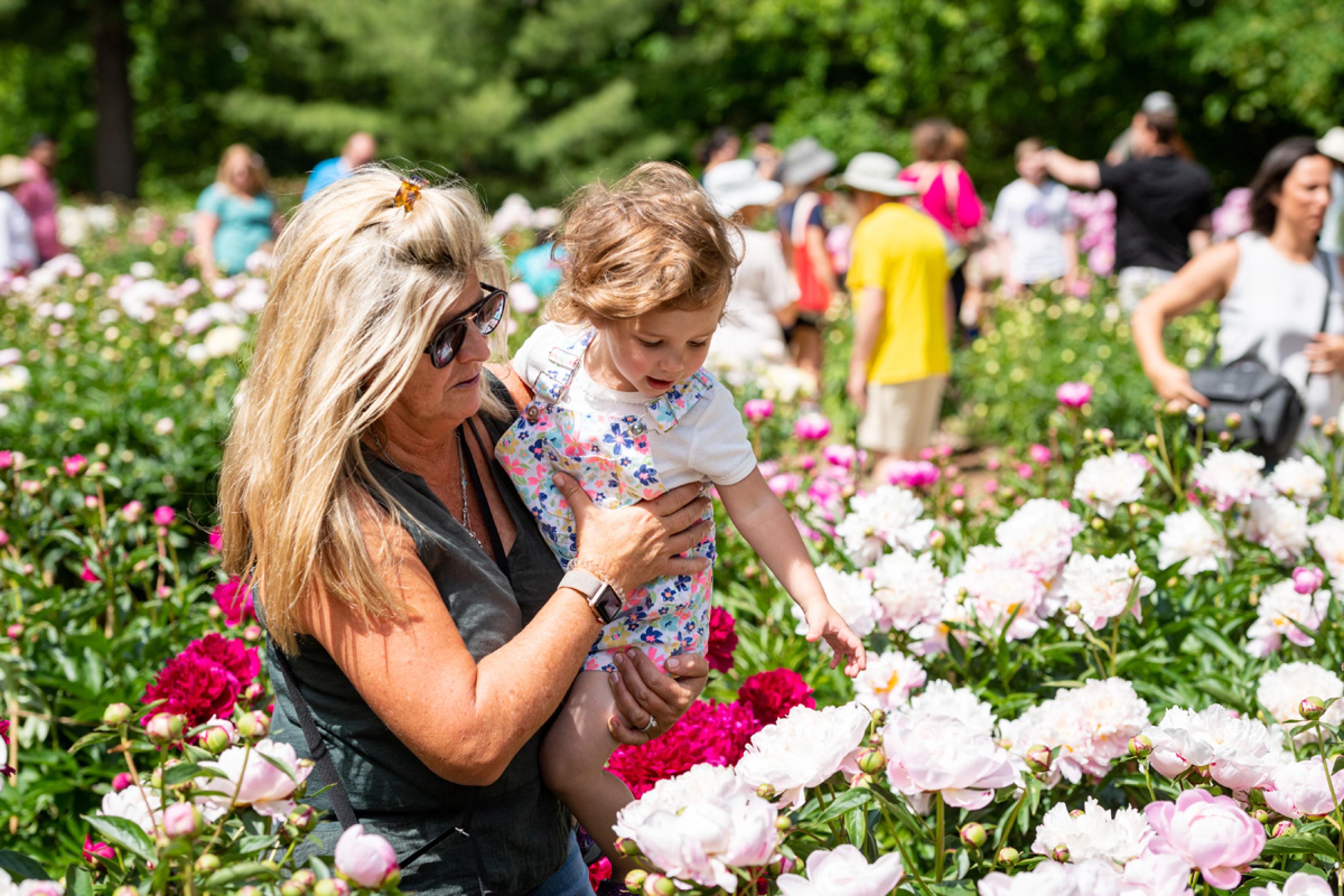
A beloved destination for generations of peony lovers.
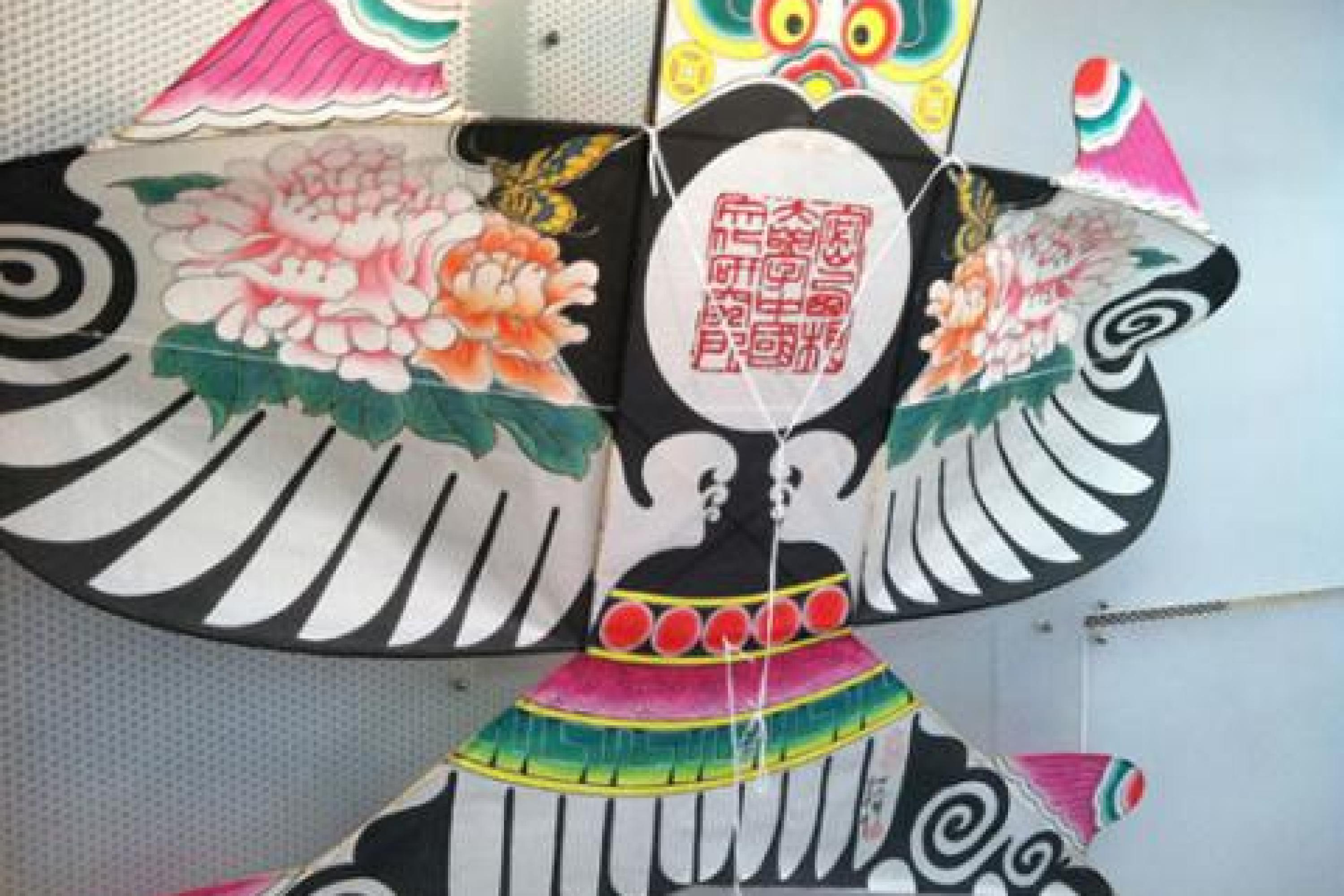
A definitive reference collection, internationally recognized within a network of sister-gardens.
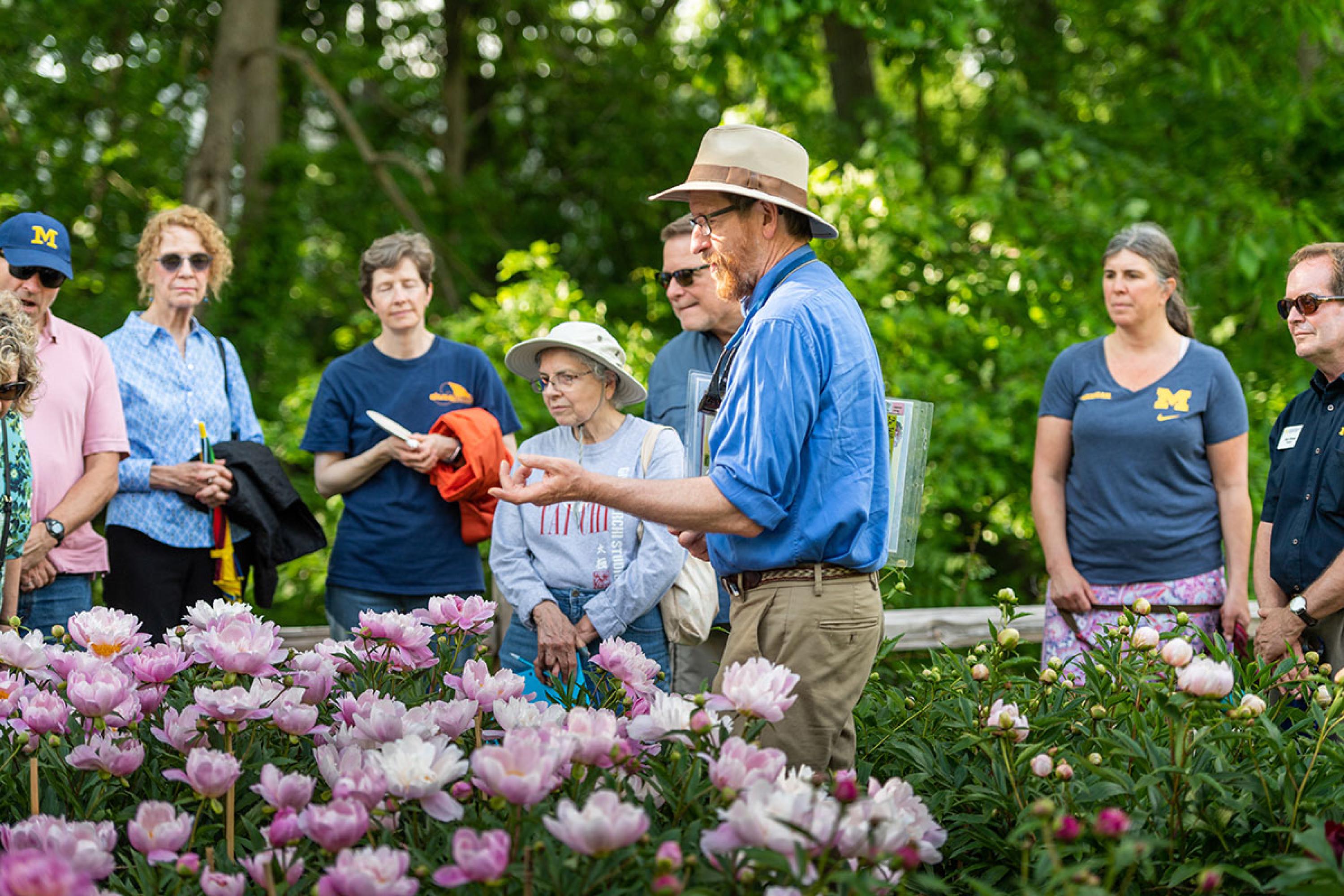
A conservation model for other historic cultivar collections based on new research methods and perspectives.
destination
Every peony is beautiful by itself.
When you have nearly 800 plants the many story-themes for arranging them are all appealing. To prioritize the immersive experience we’ve retained the original design of 27 beds with all 789 planting-spots aligned in one master-grid. We’ve intentionally kept broad paths and we seasonally install picture-labels (year-round online) to allow exact identification of every plant.
However, we’ve made the intentional decision to focus the 27 beds on historic herbaceous peonies. These are peonies introduced to gardens before 1950 (most before 1930). Fortunately, these are often fragrant – individually and even more complexly so in such an extensive display. We’ve taken 5 beds and replanted each of these with a theme – while keeping the master grid and historic restriction.
These themes are culture-of-origin, types of floral forms, and wild species and their simple hybrids.
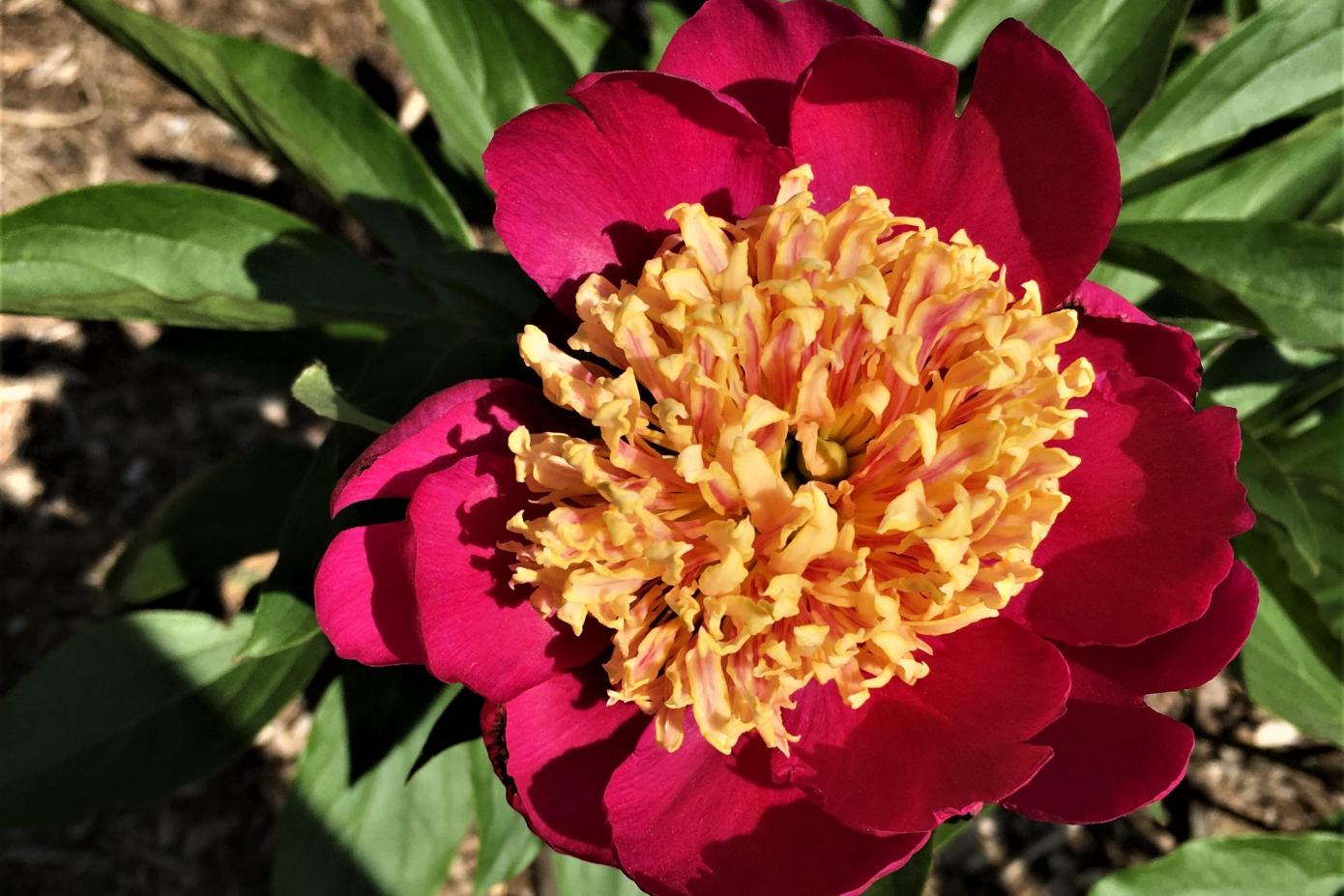
Back then...
Ever since the garden was first mapped in the 1920s, the slopes above the square beds have been designated for tree peonies. These have been added, mostly since 2010. In addition, no one in the 1920s could have imagined the desired-for-centuries hybrids between herbaceous and tree peonies would be successfully accomplished in the next generation.
In 1948, Mr. Itoh of Japan, showed how these “intersectional” peonies could be bred, and “the rest is history.” A selection of intersectional peonies are in their own bed showing their broader color spectrum, and enriching our story-telling capacity across cultures and times.
And now...
Together, all the beds of peonies – in the bloom order of tree, intersectional, and herbaceous – harmonize into an immersive experience even if our guest cares nothing about the next two components that make our garden so significant in national and international contexts.
Our success depends on the peony garden being so beautiful that it is always a destination – the recurrent huge and diverse audience shows there is ongoing public engagement and meaning.
In our years ahead, we’ll be increasing both the kinds of stories our peonies tell, and the range of voices and media in which it’s done. Yes, that will mean more visitors – on-site and digital – and that’s good!
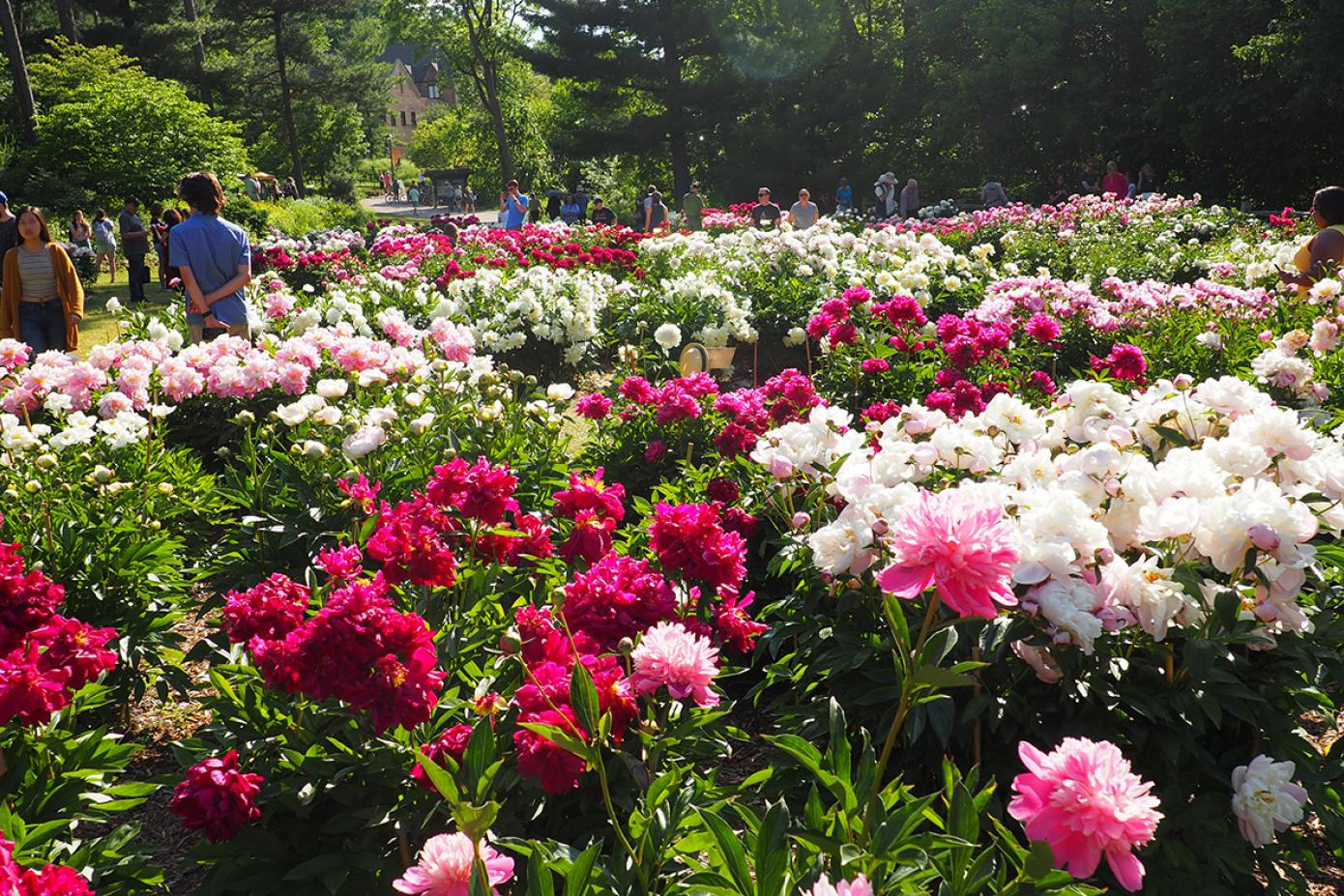
reference collection
Every peony is beautiful by itself.
A living reference collection as ours manages ‘gold-standard’ specimens – their identity is authenticated so well that they are used to confirm or deny the identity of other plants passing under the same name. Identification is first based on details of appearance, but it’s become much deeper with genomic tools.
This “gold standard” is a plant-by-plant status – our unknowns are even stripped of names that they may once have carried. If, for example, our verified ‘Andrew Muehlig’ peony doesn’t match another specimen, then the other one is a variant – or misidentified.
based on new
methods
Identification via genomic fingerprints.
In 2013 we began to collaborate with Dr. Nastassia Vlasava and her colleagues at the Central Botanical Gardens, Minsk, in the Republic of Belarus, to trial DNA-fingerprinting of visually-and-record verified peony cultivars at both institutions. This approach will remove all doubt, but it will take time and resources to work out the tools and then expand the numbers of cultivars in the studies.
Both this Peony Garden and the Central Botanical Gardens, Minsk, maintain significant peony collections – in addition to many well-known peonies, the CBG Minsk’s garden is noteworthy for its wild species as well as including cultivars developed in the former Soviet Union that are virtually unknown in North America.
Our collaborative research is also focused on the ‘family tree’ of domesticated herbaceous peonies. In the long term we want to know how every cultivar fits – based on its genomics as that is the most reliable source of information. We already know that the historic records and some genomic data are not in agreement – it is unlikely the genomic data is incorrect. As we build this tool and data set, one of our hopes is to be able to identify the ‘Unknowns’. Their genomic profiles will allow us to relink them to their lost identities.